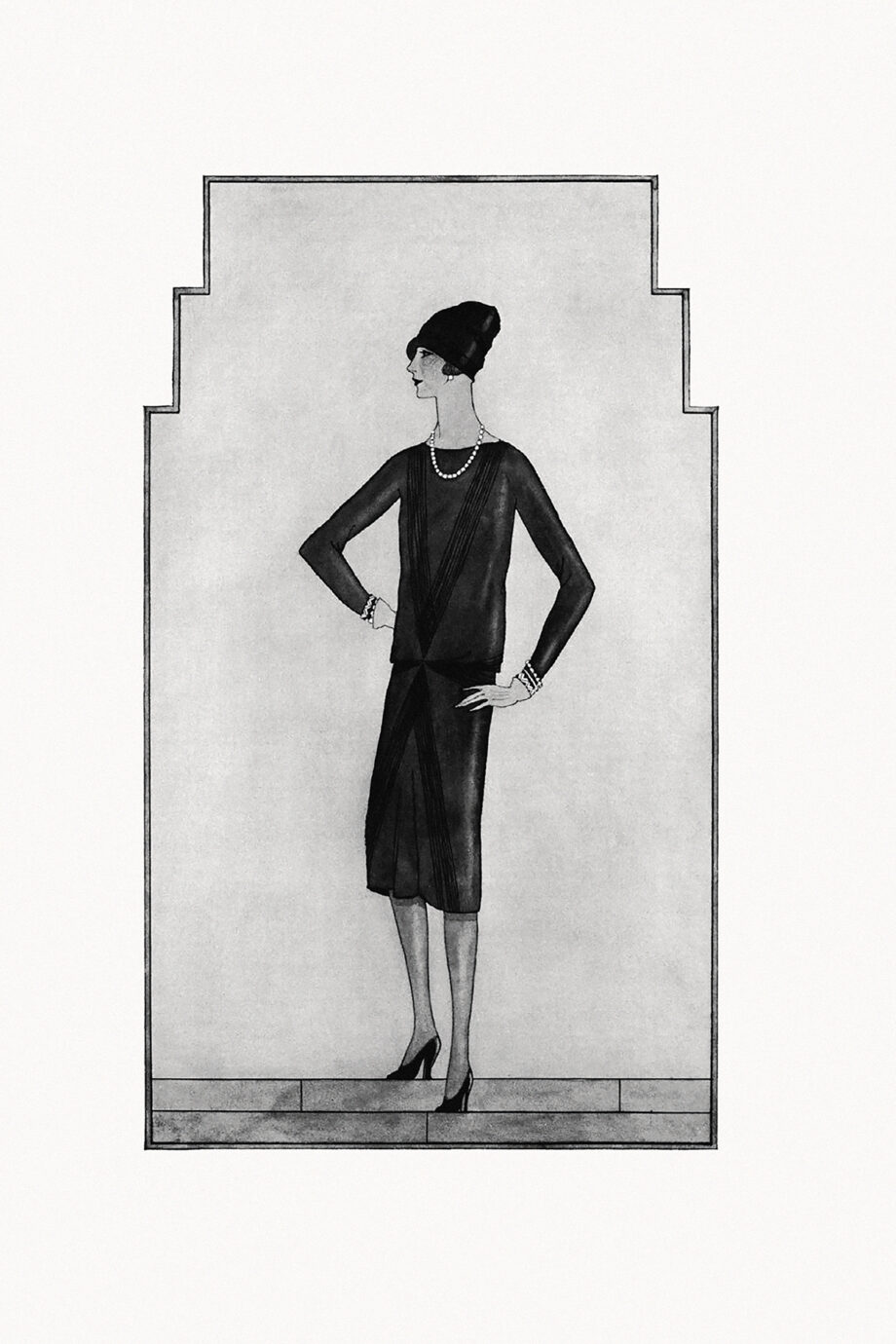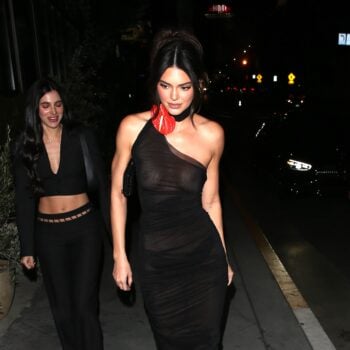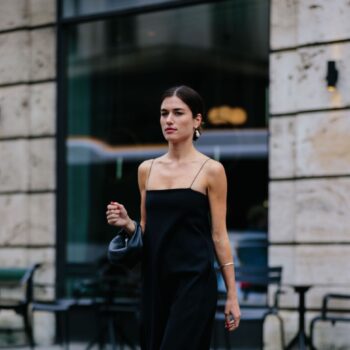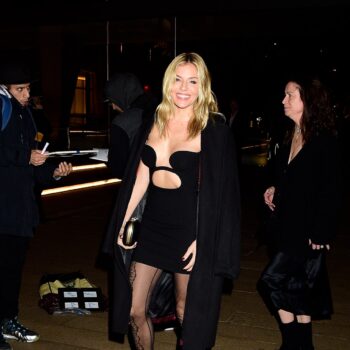Στο κάπως αποστειρωμένο φως της αποθήκης του Εθνικού Μουσείου της Σκωτίας, στην ανατολική ακτή του Εδιμβούργου, η Principal Curator Μοντέρνου και Σύγχρονου Σχεδίου, Georgina Ripley, και μια ομάδα συντηρητών βάζουν τις τελευταίες πινελιές σε ορισμένα από τα πιο εντυπωσιακά ενδύματα που θα βρεθούν στο επίκεντρο της πολυαναμενόμενης έκθεσης Beyond the Little Black Dress. Ένα cocktail φόρεμα του 1959 με τούλι και δαντέλα, σχεδιασμένο από τον Yves Saint Laurent για τον οίκο Dior, θυμίζει μια πανέμορφη νυχτοπεταλούδα. «Από άποψη συντήρησης, δεν χρειάζεται πολλά, έχει μόνο μερικά σκισίματα στο πίσω μέρος. Το βασικό είναι να σιγουρευτούμε ότι θα κάθεται καλά στην κούκλα», μου εξηγεί η Lynn McClean, Principal Conservator Χαρτιού και Υφασμάτων. Εύκολα μπορεί κανείς να φανταστεί κάποια από τις μούσες της Maria Grazia Chiuri να το φορά στο κόκκινο χαλί. Πέρα από τις απαραίτητες «χειρουργικές επεμβάσεις» που πρέπει να γίνουν στα ρούχα, πρέπει επίσης να ληφθούν αποφάσεις σχετικά με την παρουσίαση των 65 εκθεμάτων που θα αποτελούν το κύριο κομμάτι της έκθεσης. «Προσπαθούμε να ταιριάξουμε το σωστό ρούχο με τη σωστή κούκλα», λέει η McLean. «Είναι η πρώτη έκθεση στην οποία έχουμε ποικιλία χρωμάτων δέρματος», παρεμβαίνει η Ripley, εξηγώντας ότι περιμένουν κούκλες σε μεγαλύτερα μεγέθη και πως «σκεφτόμαστε επίσης τη ρευστότητα των φύλων». Η ίδια και η ομάδα της έχουν αφιερώσει πολλή σκέψη στο πώς πρέπει να παρουσιαστούν τα ρούχα και οι σωματότυποι. Το ασπρόμαυρο φόρεμα του Christian Siriano, για παράδειγμα, που φόρεσε στο εξώφυλλο του περιοδικού Gay Times ο Jonathan Van Ness, γνωστός από τη δουλειά του στη σειρά Queer Eye, είναι σημαντικό να φορεθεί σε μια κούκλα που να του μοιάζει. Μια άλλη, «δραματική» δημιουργία του Gareth Pugh από τη συλλογή Φθινόπωρο/Χειμώνας 2013, στολισμένη με «φτερά» που της δίνουν μια πανκ νότα -πρόκειται για κομμάτια από μαύρες πλαστικές σακούλες απορριμμάτων–, θα παρουσιαστεί στη θεματική Sub–cultural blacks, που μελετά το punk και το goth streetwear. Η αντίθεση ανάμεσα στο αναμενόμενο και στο απρόσμενο είναι μέρος της αποστολής της Ripley να εξερευνήσει την ιδέα του Little Black Dress ως του βασικού κομματιού μιας ντουλάπας, κλειδί για όλα τα dress–codes. «Συχνά αναφερόμαστε στο “νέο μαύρο” ή στο “νέο little black dress”, μην εννοώντας το χρώμα ή το ένδυμα καθαυτό – αφορά κάτι μεγαλύτερο», τονίζει.
Η έκθεση -που χωρίζεται με βάση τις θεματικές και όχι τη χρονολογική σειρά- θα ανοίξει με το εμβληματικό μικρό-μαύρο-φόρεμα της Chanel από το 1926, το οποίο οι διοργανωτές δανείστηκαν από το Μουσείο Διακοσμητικών Τεχνών του Βερολίνου. «“Αυτό είναι το φόρεμα που θα φορέσει όλος ο κόσμος” είχε γράψει η αμερικάνικη Vogue», λέει η Ripley. «Θελήσαμε λοιπόν να αναπαραγάγουμε την ιδέα, αλλά ταυτόχρονα να αποδομήσουμε τόσο αυτήν όσο και τον τρόπο που την αντιλαμβάνεται ο επισκέπτης της έκθεσης. Το μικρό-μαύρο-φόρεμα είναι ένα ενδιαφέρον κομμάτι, συνδεδεμένο με τον εκσυγχρονισμό του γυναικείου φορέματος και τον εκδημοκρατισμό της μόδας». Η ίδια ωστόσο θεωρεί πως η έννοια της «φτωχής πολυτέλειας» της Chanel ήταν στην πραγματικότητα κάθε άλλο παρά δημοκρατική – τα εμπνευσμένα από τις στολές των υπηρετών φορέματα, φτιαγμένα όχι από τραχύ ύφασμα όπως εκείνα, αλλά από ακριβά υλικά, σίγουρα δεν ήταν για όλες τις τσέπες. Στην έκθεση θα εκτεθούν επίσης εμβληματικά βραδινά με avant–garde σχεδιασμό, ιδανικά για το κόκκινο χαλί. Όπως η τουαλέτα Maximilian από cady και μετάξι που βλέπω σε μια κούκλα – κάτι αντίστοιχο φόρεσε η Michaela Coel όταν παρέλαβε το BAFTA Καλύτερης Ηθοποιού το 2021, αν και η δική της εκδοχή είχε κατακόκκινες μανσέτες. Υπάρχει και μια αναφορά στο μέλλον, με ένα ρομποτικό μαύρο φόρεμα του brand Cute Circuit (2018) με LED φωτισμό που λειτουργεί μέσω Bluetooth. Ωστόσο, οι τολμηρές ερμηνείες του little black dress είναι που καθιστούν την έκθεση ριζοσπαστική, καθώς αυτό εκφράζει παράλληλα την ευσέβεια και τη διαστροφή, την ομοιομορφία και την επανάσταση, την ευπρεπή και την ανατρεπτική κομψότητα. «Είναι ένα εξαιρετικά ενδιαφέρον κομμάτι. Ο τρόπος που έχει μεταμορφωθεί με τα χρόνια μάς δείχνει πώς η μόδα σχετίζεται άμεσα με την εξέλιξη. Για μένα είναι πολύ πιο ενδιαφέρον να το εξετάζω από την οπτική της δυαδικότητάς του – δείχνει σεβασμό, αξιοπρέπεια και ευσέβεια, βασικές έννοιες του Χριστιανισμού, στο πλαίσιο του οποίου όμως αντιπροσωπεύει επίσης το σατανικό, τον θάνατο, την ανυπαρξία, το κακό και την καταστροφή», τονίζει η Ripley.

Η έκθεση ήταν προγραμματισμένη για το 2020, η πανδημία όμως ανέστειλε τις προετοιμασίες της, που πλέον καλύπτουν διάστημα έξι ετών. Ως εκ τούτου, οι διοργανωτές είχαν περισσότερο χρόνο να σκεφτούν πώς αυτή μπορούσε να αντιπροσωπεύσει καλύτερα τους σύνθετους καιρούς που ζούμε, περιλαμβάνοντας για παράδειγμα το κίνημα Black Lives Matter που ακολούθησε τη δολοφονία του George Floyd το 2020, ωθώντας τη Ripley και την ομάδα της να συμπεριλάβουν φωνές που άξιζαν να ακουστούν. Όπως η καλλιτέχνιδα Sequoia Barnes, που δουλεύει με έμπνευση το ύφασμα. «Καλέσαμε τη Sequoia για να εξετάσουμε μαζί την ιδέα του μαύρου τόσο από χρωματική όσο και από πολιτισμική άποψη, θέλοντας να τιμήσουμε τη συμβολή μαύρων Βρετανών σχεδιαστών. Εκείνη μας πρότεινε τον Joe Casely–Hayford, κορυφαίο στον τομέα του menswear, ο οποίος έφυγε από τη ζωή το 2019, καθώς και έξι σχεδιαστές που ανέλαβαν την κληρονομιά του και ασχολούνται με το θέμα της ταυτότητας, ενώ χρησιμοποιούν το μαύρο και με ένα αφρο-φουτουριστικό πρίσμα», λέει η Ripley, περιγράφοντας τη θεματική Black Futures, που θα φιλοξενεί επίσης δημιουργίες των Martine Rose, Tolu Coker, A–COLD–WALL και Maximilian. «Αναρωτιόμαστε πώς θα μπορούσε να είναι η μόδα -και η ζωή- για τους μαύρους χωρίς αποικιοκρατία, καταπίεση, ρατσισμό. Η μόδα και η υψηλή ραπτική γεννήθηκαν στο Παρίσι, πώς θα ήταν όμως αν αυτό είχε συμβεί κάπου αλλού; Από την άλλη, τώρα πλέον η μόδα λειτουργεί στο πλαίσιο ενός παγκόσμιου συστήματος», λέει.
Πέρα από τη συγκεκριμένη έκθεση, η μόδα και το στιλ έχουν μόνιμη θέση στις θολωτές αίθουσες του Εθνικού Μουσείου της Σκωτίας. Μαζί με τους σκελετούς δεινοσαύρων, τα λεπιδόπτερα και τα φανάρια φάρων, διαθέτει στη μόνιμη συλλογή του και το αρχείο της Jean Muir, που θεωρείται το μεγαλύτερο του είδους του στον κόσμο, αποτελούμενο από 18.000 δημιουργίες. Μία από αυτές είναι ένα μικρό μαύρο μίνι φόρεμα της δεκαετίας του 1960 -βρίσκεται στη μόνιμη έκθεση του τμήματος Fashion and Style, στο πρώτο επίπεδο-, σχεδιασμένο από τη Muir για το πρώτο μοντέλο της που στη συνέχεια έγινε πελάτισσα και πολύ καλή της φίλη – την ηθοποιό Joanna Lumley, μετέπειτα πρωταγωνίστρια της διάσημης τηλεοπτικής σειράς Absolutely Fabulous. Και μπορεί το μουσείο να διαθέτει τέτοια σπουδαία κομμάτια, όμως οι τολμηρές εκθέσεις που διοργανώνουν η Ripley και η ομάδα της είναι που έχουν προσελκύσει σε αυτό το διεθνές ενδιαφέρον, ταράζοντας τα νερά και αμφισβητώντας την παραδοσιακή οδό σχετικά με τα άτομα και τις ιδέες που πρέπει να εκπροσωπούνται σε έναν μουσειακό χώρο. Όπως συνέβη με την έκθεση Body Beautiful: Diversity On The Catwalk σχετικά με τη συμπερίληψη και το body positivity, που εγκαινιάστηκε στο Εδιμβούργο το 2019, για να ταξιδέψει στη συνέχεια σε πέντε μουσεία στο Ηνωμένο Βασίλειο και στη Σουηδία. Αυτή εξέταζε θέματα μεγέθους, φύλου, ηλικίας, φυλής και αναπηρίας, αμφισβητώντας τα μέχρι τότε δεδομένα στη μόδα και απευθυνόμενη σε μια νέα κοινότητα επισκεπτών που ένιωσαν πρώτη φορά να εκπροσωπούνται σε μουσείο. Ένα από τα πιο καθηλωτικά και πολυσυζητημένα εκθέματα ήταν μια κούκλα φτιαγμένη με πρότυπο το σώμα της Sinéad Burke, συγγραφέως, ακαδημαϊκού και υπέρμαχου των δικαιωμάτων των ατόμων με αναπηρία. «Η συνεργασία με τη Sinéad ήταν απίστευτη εμπειρία», θυμάται η Ripley. «Να φτιάχνουμε την κούκλα με βάση το σώμα της, να μας λέει τι ικανοποίηση της προσέφερε αυτό και να έρχεται κόσμος που πλέον ένιωθε να εκπροσωπείται». Εξεπλάγη από την επιτυχία που γνώρισε η έκθεση; «Είχαμε άγχος μήπως ο κόσμος δεν αντιλαμβανόταν τις προθέσεις μας», απαντά. «Αλλά το κοινό την αγκάλιασε. Κάτι που μου έκανε τρομερή εντύπωση όταν διάβασα τα σχόλια των επισκεπτών ήταν ότι πολλοί έγραφαν: “Είμαι queer, είμαι plus size, είμαι άνω των 50 και είναι η πρώτη φορά που εκπροσωπούμαι στη μόδα ή σε έναν μουσειακό χώρο”. Ως επιμελήτρια της έκθεσης ένιωσα πως είχα πιο άμεση και προσωπική επαφή με το κοινό απ’ ό,τι ενδεχομένως σε άλλες εκθέσεις». Ενώ η έκθεση περιόδευε, με ενημερώνει, η επιμελητική ομάδα επικαιροποιούσε το περιεχόμενό της, ανταποκρινόμενη στα σχόλια. «Είναι πολύ ενδιαφέρουσα εμπειρία για έναν επιμελητή να προσπαθεί να αποβάλει την ηγετική πλευρά της θέσης του και να πει “είμαστε μαζί σε αυτό το ταξίδι”», παραδέχεται και ομολογεί πως, όταν αυτή ολοκληρώθηκε, τον Οκτώβριο του 2022, ένιωσε να της λείπει.

Έχοντας περάσει μια μέρα μαζί της, μπορώ με σιγουριά να πω πως έχει συμπεριλάβει αυτό το σκεπτικό στον σχεδιασμό της έκθεσης Beyond The Little Black Dress. Είναι επίσης ξεκάθαρο ότι η μεγαλωμένη στο Έσεξ επιμελήτρια διαθέτει ευρεία πνευματική καλλιέργεια, ενώ η ιστορία της μόδας κυλά στο αίμα της – ένας θείος της ίδρυσε το fashion brand Minerva, στο οποίο έδειχνε ιδιαίτερη προτίμηση η πριγκίπισσα Μαργαρίτα, ενώ η μητέρα της εργάστηκε για τον θρύλο της ραπτικής της δεκαετίας του ’60, Michael Fish. Μέσα από τις δουλειές της, η Ripley προσπαθεί να ταράξει τα νερά με χιούμορ και με αναφορές στην ποπ κουλτούρα, εστιάζοντας σε θέματα με τα οποία μπορεί να ταυτιστεί το κοινό.
Η συζήτησή μας περνά από το μαύρο φόρεμα της Άννα Καρένινα, που προμήνυε την τραγική πτώση της, στη μεταμόρφωση της Sandy στο τέλος του Grease -«υπάρχει ένα στοιχείο φετιχισμού εκεί» λέει για το μαύρο κολάν της ηρωίδας- και στις ηθοποιούς που εμφανίστηκαν όλες με μαύρα στις Χρυσές Σφαίρες το 2018, στον αντίκτυπο του #MeToo, διαμαρτυρόμενες για τον μισογυνισμό στη βιομηχανία του κινηματογράφου και στην κατάχρηση εξουσίας παραγόντων όπως ο Harvey Weinstein. «Το μαύρο συχνά λειτουργεί ως σύμβολο ομοιομορφίας και κατά συνέπεια αλληλεγγύης. Αλλά σε αυτή την περίπτωση αφορούσε και τον ερωτισμό που συνοδεύει το μαύρο φόρεμα», εκτιμά. «Είναι ενδιαφέρον ότι δεν χρησιμοποίησαν το λευκό, χαρακτηριστικό μάλιστα του κινήματος των σουφραζετών».
Μπορεί ο συμβολισμός του μαύρου στη μόδα να μην είναι ποτέ τελείως ξεκάθαρος, επιδεχόμενος πολλές ερμηνείες, αλλά το ίδιο συμβαίνει με την προσωπική μας αντίληψη για το χρώμα, θεωρεί η Ripley. Αυτό που βλέπουμε και αυτό που ένας κατασκευαστής υφασμάτων, ένας καλλιτέχνης ή ένας σχεδιαστής θέλει να πετύχει κατά τη διαδικασία της βαφής μπορεί να διαφέρει, επιτρέποντας στον καθένα να το ερμηνεύσει με τον δικό του τρόπο. «Είναι κάτι με το οποίο καταπιάνεται η θεματική Shades of Black, που εξετάζει την επιρροή των Γιαπωνέζων σχεδιαστών στη γαλλική σκηνή κατά τη δεκαετία του ’80. Η Rei Kawakubo και ο Yohji Yamamoto συγκεκριμένα δηλώνουν ότι υπάρχουν διαφορετικές αποχρώσεις του μαύρου. “Το κόκκινο είναι μαύρο” ήταν ο τίτλος της συλλογής της πρώτης, το 1988. Είναι ένα χρώμα το ίδιο δυνατό με το μαύρο και έχει αποχρώσεις που τείνουν προς ένα κοκκινωπό καφέ ή προς ένα κάπως μπλε μαύρο. Υπάρχουν πολλά διαφορετικά χρώματα μέσα στο φάσμα του μαύρου, και όμως, επιστημονικά μιλώντας, αυτό ορίζεται ως απουσία χρωμάτων. Συνεπώς γίνεται μια πολύ ενδιαφέρουσα συζήτηση».
Αξίζει να σημειωθεί ότι η δημιουργία της μαύρης μπογιάς ήταν κάτι εξαιρετικά δύσκολο στο παρελθόν. Τον 15ο αιώνα, στη Δύση φτιαχνόταν από τους μικρούς όγκους αυγών που άφηναν στα φύλλα βελανιδιάς τα έντομα και ήταν υπερβολικά ακριβή. Η χρήση σιδηρομεταλλευμάτων κατά τον 19ο αιώνα «διαλύει αυτή τη στιγμή συλλογές», όπως λέει η Ripley, ενώ στην Ιαπωνία και στην Αφρική σε κάποιες τεχνικές βαφής χρησιμοποιούνταν το λουλάκι για τη δημιουργία σκούρων αποχρώσεων. Η σύγχρονη Βρετανίδα σχεδιάστρια Phoebe English εξετάζει τη δημιουργία μαύρης βαφής υπό ένα πρίσμα βιωσιμότητας, κάτι που συμπεριλαμβάνεται στην έκθεση. «Έχουμε ένα κομμάτι από τη συλλογή της S/S ’22, για τη βαφή του οποίου -στην οποία έδωσε τον τίτλο inky dye– εργάστηκε περίπου τέσσερις μήνες προκειμένου να τη φτιάξει. Είναι πολύ ενδιαφέρον να εξετάζεις πώς μπορείς να δημιουργήσεις το μαύρο χρώμα με οικολογικό και βιώσιμο μεν τρόπο, αλλά παράλληλα να έχει το βάθος που πρέπει», αναφέρει η Ripley.
Οι πολλές αποχρώσεις του little black dress είναι, φυσικά, όλες μέρος της αέναης γοητείας και του μυστηρίου που παρουσιάζει. Ελπίζω όσοι βρεθείτε στην έκθεση στη Σκωτία ή διαβάσετε το βιβλίο Little Black Dress: A Radical Fashion που τη συνοδεύει να περάσετε όμορφα ανακαλύπτοντας τις διαφορετικές εκφάνσεις του. Εγώ σίγουρα απόλαυσα την επίσκεψή μου, καθώς παρατηρούσα ορισμένους από τους αινιγματικούς «μαύρους κύκνους» του μουσείου. Προς το παρόν, τα υπόλοιπα εκθέματα βρίσκονται καθ’ οδόν για Εδιμβούργο. Ένα ερωτηματικό πλανάται γύρω από ένα συγκεκριμένο, με πρωταγωνιστικό ρόλο, του οποίου η άφιξη δεν έχει επιβεβαιωθεί ακόμη – όπως συμβαίνει συχνά με τις πριμαντόνες. «Ελπίζουμε ότι θα έχουμε ένα κομμάτι που φόρεσε ένας διάσημος χαρακτήρας σε τηλεοπτική σειρά, αλλά δυστυχώς δεν μπορώ να αποκαλύψω κάτι αυτή τη στιγμή», λέει διπλωματικά η Ripley. Τη ρωτάω αν έχει εντοπίσει κάτι στις πασαρέλες υψηλής ραπτικής του 2023 που θα ήθελε να συμπεριλάβει στην έκθεση, αν βεβαίως υπάρχει το χρονικό και χρηματικό περιθώριο. «Δεν είδα κάτι, αλλά νομίζω πως ένα στοιχείο που επηρεάζει αυτή τη στιγμή τη μόδα και κατ’ εμέ είναι πολύ πιθανό να δούμε στις επόμενες πασαρέλες είναι το remake του Wednesday στο Netflix. Λειτουργεί σαν νέο εφαλτήριο σχετικά με το πώς βλέπει ο κόσμος το μαύρο χρώμα στο προσωπικό του στιλ». Μια και ο λόγος για το προσωπικό στιλ, της θέτω την τελευταία μου ερώτηση: Έχει βρει η ίδια την απάντηση στην αγαπημένη ερώτηση όλων των fashion editors, ποιο είναι δηλαδή το δικό της τέλειο little black dress; «Έχω κάνα δυο», απαντά. «Είναι το ρούχο που μπορείς να φορέσεις παντού όταν δεν γνωρίζεις ποιος είναι ο ενδυματολογικός κώδικας. Επιπλέον, όταν δεν θέλεις να ντυθείς ούτε υπερβολικά καλά ούτε πολύ πρόχειρα, λες: “Θα βάλω ένα απλό μαύρο φόρεμα”. Αλλά, έχοντας δουλέψει πάνω σε αυτή την έκθεση, δεν το βλέπω καθόλου έτσι. Νιώθω ότι θα ήθελα να το φορέσω και να ταράξω τα νερά. Δεν είμαι καν σίγουρη ότι θέλω να φορέσω μαύρο φόρεμα στα εγκαίνια της έκθεσης. Νομίζω πως είναι πιο πιθανό να βάλω ένα ροζ ταγέρ!» καταλήγει γελώντας.
*Η έκθεση Beyond The Little Black Dress θα παρουσιαστεί στο Εθνικό Μουσείο της Σκωτίας, στο Εδιμβούργο, 1 Ιουλίου – 29 Οκτωβρίου. Μπορείτε επίσης να επισκεφθείτε την έκθεση The Fashion Show: Everything but the Clothes, στη Michelin Design Gallery του μουσείου V&A Dundee, 3 Ιουνίου – 24 Ιανουαρίου, σε επιμέλεια του ακαδημαϊκού μόδας και συγγραφέα Iain R. Webb, ο οποίος συνέβαλε με το κεφάλαιο Sublime Black στη συγγραφή του βιβλίου Little Black Dress: A Radical Fashion. Σημειώστε πως το Dundee απέχει μόλις μιάμιση ώρα με το τρένο από το Εδιμβούργο.
__________________________________________________
IN THE COOL, somewhat antiseptic lighting of the National Museum of Scotland’s storage facility on the east coast of Edinburgh, Principal Curator of Modern & Contemporary Design Georgina Ripley and a team of conservationists are at work, primping and fixing some of the show stopping garments that will soon be taking centre stage in the keenly anticipated exhibition Beyond the Little Black Dress (opening July 1st). A 1959 tulle and lace cocktail dress by Yves Saint Laurent for Dior rests listlessly on a sewing table, like a splendid moth in hibernation, awaiting its reawakening. “In conservation terms, it doesn’t need much treatment… it’s just got a few rips down the back. The main thing is to make sure it looks right on the mannequin,” explains Lynn McClean, Principal Conservator of Paper and Textiles, fluffing out its diaphanous bodice, so that it’s not hard to imagine it shimmying down a red carpet, worn by one of Maria Grazia Chiuri’s contemporary Dior muses. Beyond these necessary surgeries, there are also plenty of decisions to be made about how to display the 65 exhibits that will make up the bulk of the show, “trying to marry up the right outfit and the right pose on the right mannequin,” as McClean puts it. “This is the first exhibition we’ve done where we’ve done a range of skin-tones,” says Ripley, adding that larger size “curve models” will soon be arriving from the manufacturers, “and we’re also thinking about gender fluidity”. Ripley explains that she and her team have done a lot of work, thinking about how not just clothes – but bodies – should be represented in the museum. A Christian Siriano twisted black and white gown, as worn by American Queer Eye star Jonathan Van Ness on the cover of Gay Times, will be a part of the exhibition, for instance, and it is important to show it on a figure that feels appropriate.
On a mannequin nearby, a wildly dramatic creation by Gareth Pugh from the designer’s Autumn/Winter 2013 collection, embellished with dynamic, punkish ‘feathers’ – revealed on closer inspection to be rectangles cut from black, plastic refuse bags – trembles in the barely-perceptible airflow. As exquisite as it is deliberately perverse, this sartorial black swan will be displayed in a part of the exhibition dedicated to “Sub-cultural blacks’’, exploring punk and goth streetwear, within a section of the gallery shortly to be trussed out with bungee cords to resemble an underground fetish club. “We want it to look gritty and exciting,” says Ripley with a grin The “juxtaposition between the expected and the unexpected” is all part of Ripley’s curatorial mission to explore and explode the idea of the Little Black Dress as the demure wardrobe staple, the key to all invisible dress-codes: “We often say something is ‘the new black’ or we say something is the ‘little black dress’ of its time, actually it can mean more than just the literal garment. And also, you know, it doesn’t have to be a woman that wears a dress… it’s broader than that.”
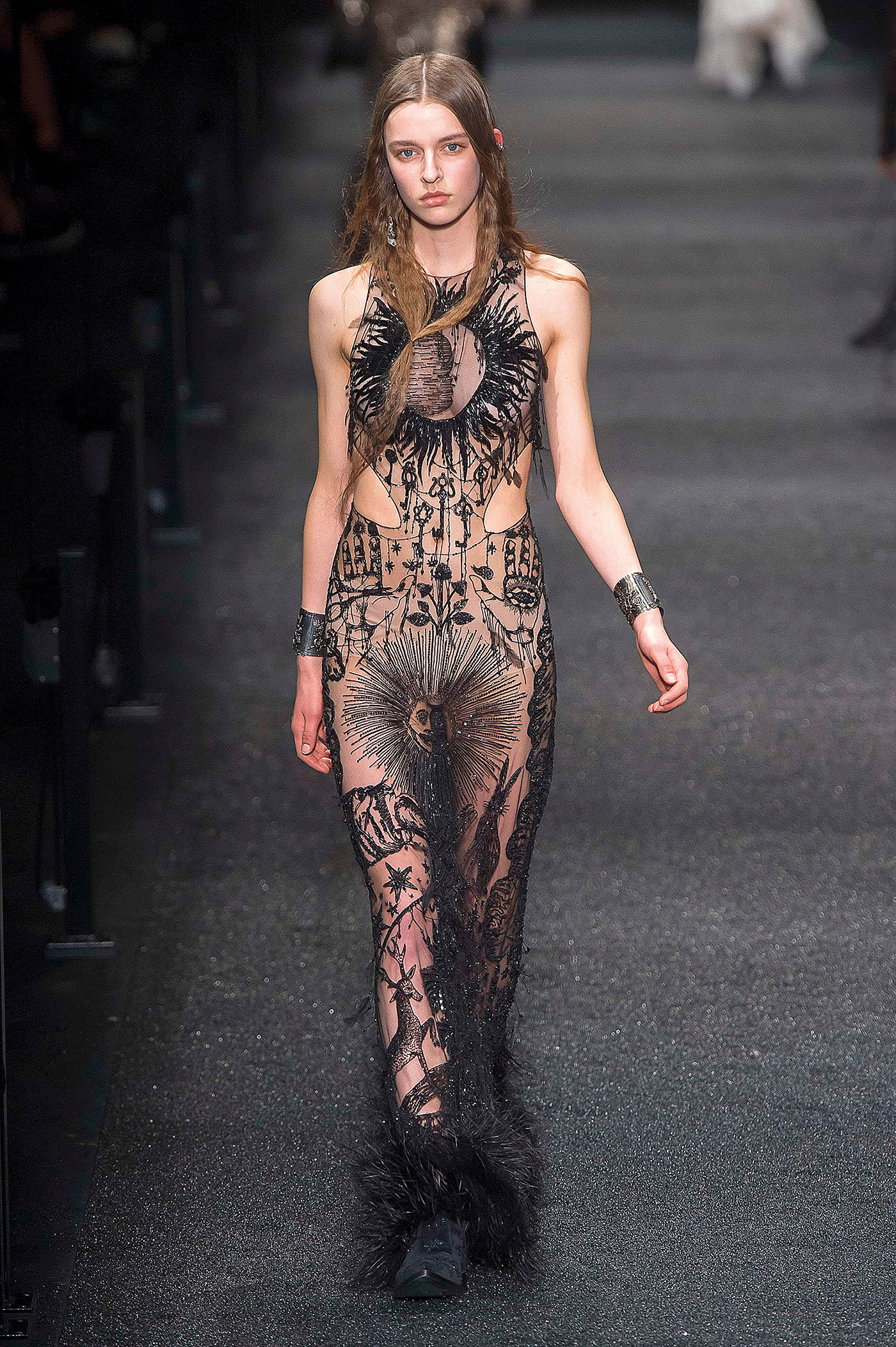
The show will open with an example of Chanel’s seminal 1926 LBD (a long-sleeved chemise on loan from the Museum of Decorative Arts in Berlin). “Everybody knows the American Vogue article that says, ‘This is the frock that all the world will wear’,” says Ripley. “We really wanted to recreate this moment, but also to kind of deconstruct that and people’s understanding as soon as you walk in… “The piece is so interesting… tied to this narrative of the modernization of women’s dress and the democratisation of fashion.” Ripley argues, however, that Chanel’s notion of ‘Pauvre luxe’ was in fact quite the opposite of democratic. Infact, the LBD’s couture “appropriation” of the black dresses of servants’ uniforms, “which would have been a more coarser black fabric… by turning it into something that’s made of a much more expensive material, you create a completely different effect.” And certainly not one that was affordable for all. From here, the exhibition – arranged by theme, rather than chronology – goes on to showcase some world-class examples of iconic cocktail attire, wildly experimental avant-garde design and sinuous red carpet looks, like the Maximilian cutout silk-cady column gown, that I spy dressing one of the mannequins in the storage facility (Michaela Coel wore the same style to accept her Best Actress BAFTA in 2021, albeit Coel’s version featured blazing scarlet cuffs). There’s a future-facing nod too, to sci-fi and digital interactivity, with a Bluetooth-enabled, LED-powered black dress by wearable technology brand CuteCircuit (2018) which lights up as users interact with it via a tablet screen.
However, it is the bold explorations of the other guises and meanings of the Little Black Dress investigating its history and protean identity as the embodiment of both piety and perversion, uniformity and rebellion, well-mannered chic and anarchic subversion – that makes the exhibition truly radical, fascinating (and well worthy of a plane ticket to Scotland!). “It’s such an interesting garment to dissect because it is a blank canvas. In terms of how it has morphed into these different silhouettes over time, it really shows you how fashion relates to the broad sweeps of history. But to me, it’s much more interesting to look at it in this thematic sense because it’s very strange that these contradictions exist. If you think about this idea of it connoting respect and dignity and piety that comes from Christianity… yet within that same faith it also represents the devil, death, nothingness, evil and destruction… That duality exists within a really narrow context.”
Originally slated to open in 2020, Beyond The Little Black dress has been six years in the making. The pandemic-induced pause meant more time to reflect on how an exhibition about the classic black dress might better engage with our complex times, not least in the light of the other defining moment of 2020 – the horrifying murder of George Floyd and the rise of Black Lives Matter movement that followed. These events brought new urgency to some of the questions Ripley and her team had been asking about the narratives and voices that deserved representation in the gallery. And this, in turn, led Ripley to invite Sequoia Barnes, the prolific textile/mixed media artist, potter and academic, doing doctoral work at the University of Edinburgh, to curate a new section for the exhibition. “We invited Sequoia to come to the show to think about this idea of black and blackness and blackness as identity; but with a specific brief to celebrate the contribution of Black British designers to the industry… She responded to it in just the most amazingly creative way, to begin with a designer Joe Casey-Hayford [the Black British menswear star, who died in 2019]… and then she’s chosen six designers who work within his legacy, who are addressing identity and also using the colour black, but looking at it within this kind of Afro futuristic lens…” says Ripley of the Black Futures section of the exhibition, which will feature designer Martine Rose, Tolu Coker, A-COLD-WALL and Maximilian among others “It’s about imagining a different future, it’s thinking about what could fashion be, and what could life be like for black people, without colonialism, without oppression, without racism? That’s really interesting, too, in the context of looking at fashion really broadly and saying, we think of fashion and couture and the birthplace being Paris, but what if we think about it coming from somewhere else? And obviously, we operate in this global interconnected system now for fashion.”
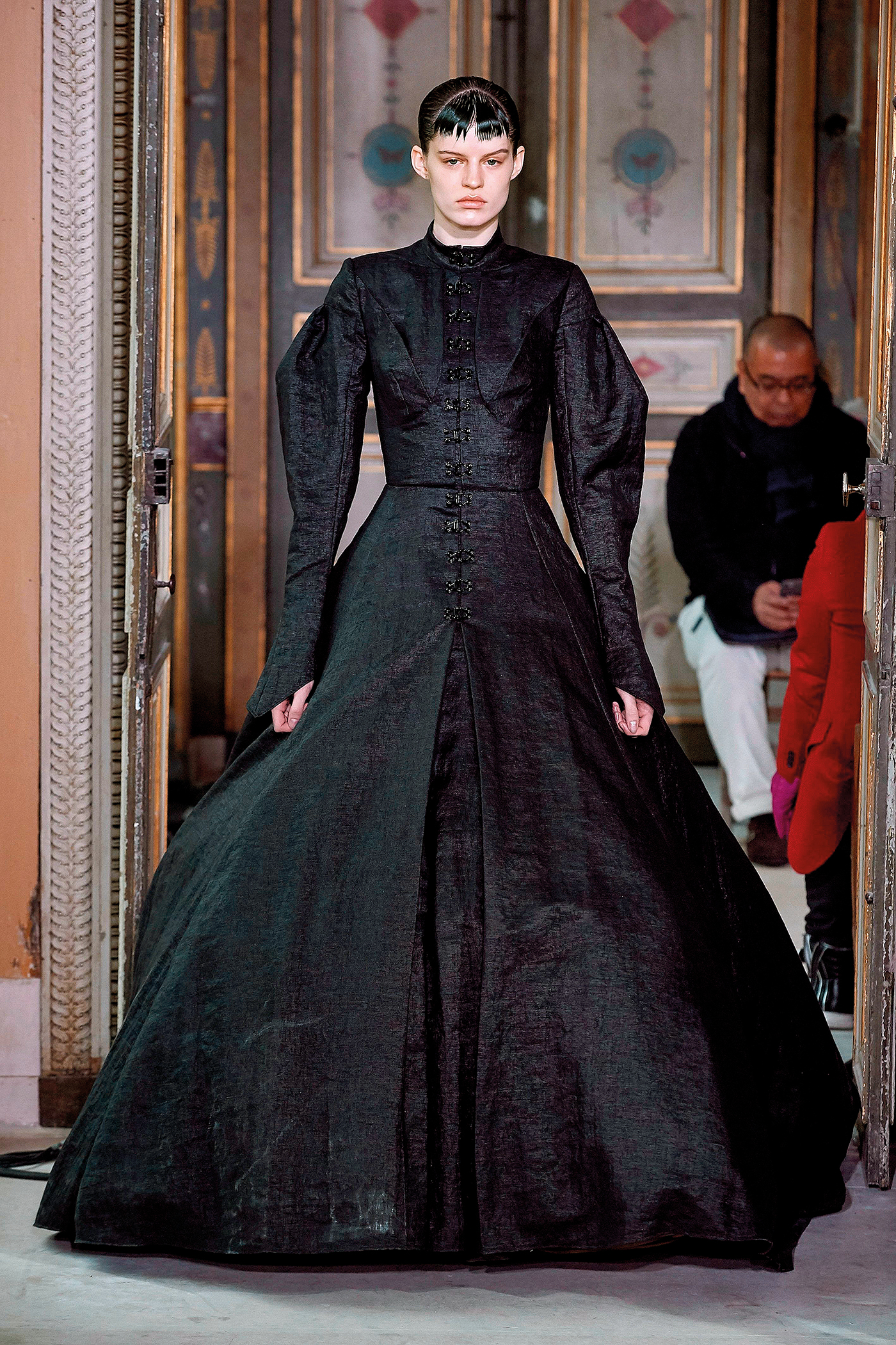
Whenever you choose to visit the vaulted halls of the National Museum of Scotland in the heart of Edinburgh, Fashion and Style make a proud contribution to the permanent collections on display. Along with the museum’s many dinosaur skeletons, glistering lighthouse lanterns and a veritable lepidopterist’s paradise, the institution is also the inheritor of the Jean Muir archive – believed to be the largest fashion archive in the world, comprising over 18,000 artefacts. One of these just so happens to be a stand-out 1960s Little Black mini-dress designed by Muir for her first ever house model – later client and good friend – the Ab Fab actress Joanna Lumley. (You will find the Lumley Little Black Dress behind a vitrine in the permanent Fashion and Style Gallery on level 1). Such pleasing threads aside, it is the bold and progressive temporary fashion exhibitions, staged by Ripley and the team, that have garnered international attention, challenging conventional ideas about who and what should be represented in a museum space. A recent tour de force was Body Beautiful: Diversity On The Catwalk – examining inclusivity and body positivity in fashion – which opened in Edinburgh in May 2019, before going on to tour to five different museums in the U.K and Sweden. Addressing themes of size, gender, age, race and disability, the exhibition not only challenged fashion orthodoxies, but spoke to a new community of visitors and lenders, who saw themselves included in a museum context for the first time.
One of the most arresting, revolutionary – and talked about – exhibits in Body Beautiful was a display mannequin cast from the body of Sinéad Burke, the writer, academic and disability advocate, the first fashion mannequin ever to be cast from a little person. “Working with Sinéad was absolutely incredible,” says Ripley. “To cast the mannequin from her body and to hear her say how rewarding that was; and for people to come through the space and just imagine different possibilities for themselves, based on seeing themselves represented.” Did the success of the show surprise Ripley? “There was a nervousness, I think, that the show would be taken in the spirit that it was intended. But audiences really ran with it…. One thing that was really striking to me when reading the visitor comments book… was people saying things like, ‘You know, I’m queer, I’m plus size, I’m over 50 and I’ve never seen myself represented in fashion or in a [museum] space before’… “For me as a curator, it was having a much more personal and direct connection with the audience, than perhaps you do with other topics.” Throughout the extended run of the show, the curatorial team continued to seek and respond to feedback from visitors, making changes to the exhibition, as it toured from city to city. “It’s quite an interesting experience as a curator, to try and strip back that authorial voice, to sort of say, we’re actually all in this journey together,” admits Ripley. When the show closed its doors for the final time in October 2022, she says, “I felt bereft.” Having spent a day behind the scenes at the museum with Ripley, it’s evident that she is bringing much of the expansive and inclusive thinking garnered through Body Beautiful, to Beyond The Little Black Dress, from the different curatorial voices, to the diversity of bodies represented. It’s also abundantly clear that the Essex-raised curator, who has fashion history in her bones (her father’s uncle started the fashion brand Minerva, favoured by Princess Margaret, and her mother was briefly a tailor’s apprentice to the 60s tailor about town Mr Fish), has a broad and eclectic intellectual curiosity. Pop culture references, humour and relatability all play into her elegantly disruptive, democratising agenda.
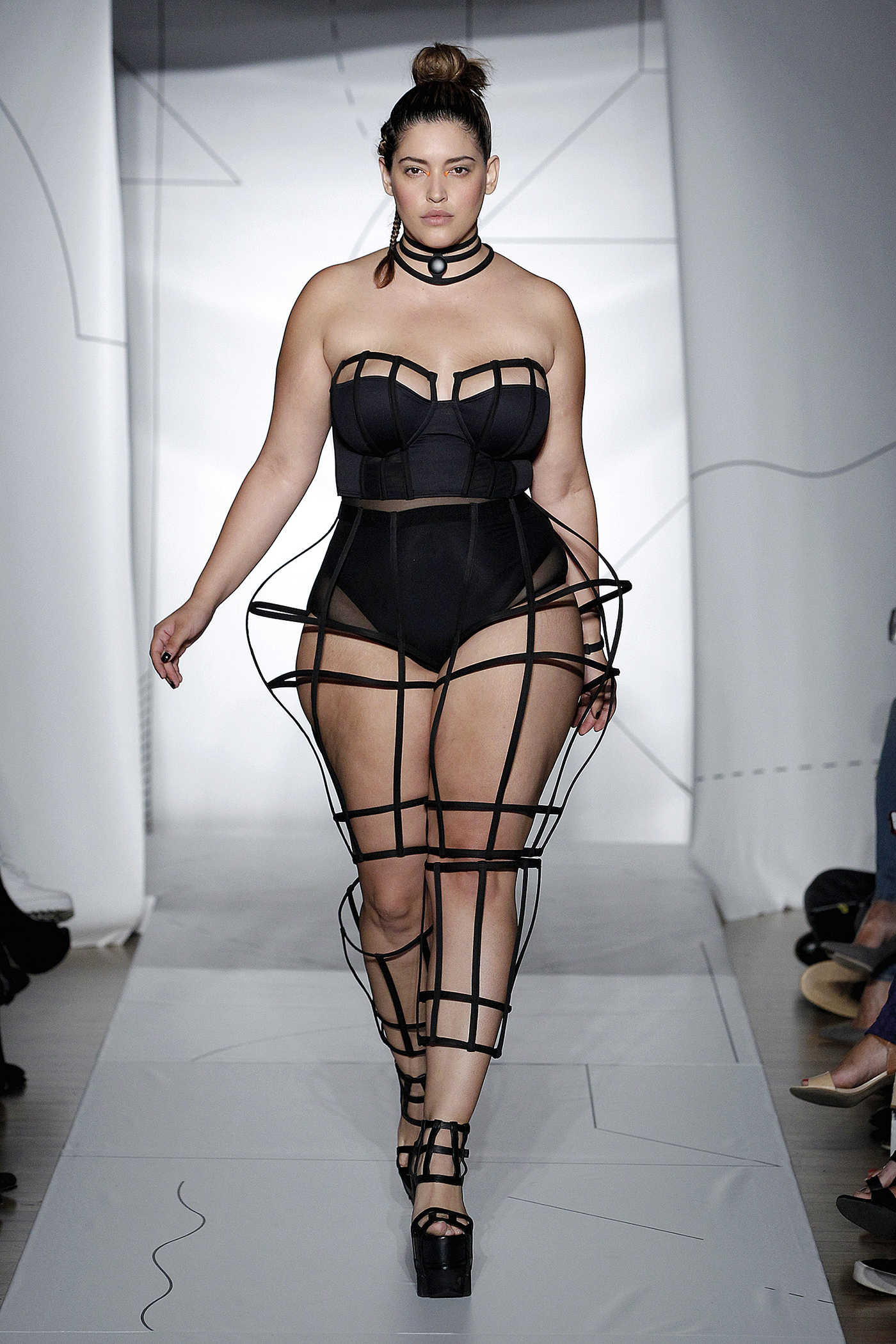
Our conversation hops easily from Anna Karenina’s black dress foreshadowing the heroine’s tragic fall, to the transmogrification of Sandy at the end of Grease, “there’s an element of the fetishistic there”. From the sexualisation of Sandy’s black second-skin leggings, we segue to discussing the glamour black-out brought by the sorority of Hollywood actresses, politicised by the #MeToo movement, who wore only black to the Golden Globes in 2018, in protest at the misogynistic culture that permeated the film industry and conspired to allow serial abusers such as Harvey Weinstein to thrive. “There’s something around black being often a sign of uniformity and therefore black as solidarity. But it was also about this reclaiming of sensuality that is implicit in the black dress,” postulates Ripley. “Black is a symbol of protest, it always has been, but then interestingly, you could argue, why did they not wear white as a symbol of women fighting back… a suffragette colour after all?” And if the precise meanings of wearing black are endlessly slippery and elusive; so are our perceptions of the colour black, says Ripley. What we can see with our eyes, and what a fabric manufacturer, artist or craftsperson aims to achieve in the dyeing process can be similarly nuanced and open to interpretation. “It will be addressed quite explicitly in a section of the exhibition called Shades of Black, which looks at the influence of Japanese designers on the Paris catwalks in the 80s… Rei Kawakubo and Yohji Yamamoto in particular talk about there being shades of black. Rei Kawakubo famously said, ‘Red is black’ [the title of her 1988 collection]. It is as strong a colour as black and it can have these different hues that converge towards this kind of brownish reddish, or converge towards this kind of blue-ish bllackish… There are actually many different colour within the spectrum of black and yet black is, scientifically, the absence of colour, so it breaks down into a really interesting conversation about that, but also thinking about different techniques in history.” It also so happens that creation of black dye throughout the history of dress has been notoriously difficult to achieve. In 15th century Western dress, black dye was created with oak apples (growths left behind on oak leaves from insect egg sacs) and was fantastically expensive. The 19th century use of iron ore in historic silks “is now disintegrating collections,” says Ripley. In Japanese culture, however, and in some traditional African textile techniques, indigo has traditionally been used to create the darkest of textile hues. Contemporary British designer, Phoebe English, is someone who is exploring the techniques and nuances of black dye-making from a sustainable and regenerative perspective. Her work is included in the exhibition, says Ripley: “We have acquired a piece from her SS22 collection, where she worked for about four months to develop her own dye – it’s called ‘Inky’ dye. In exploring how you create black in a modern context that’s eco- sustainable, but also has this depth of colour, Inky is really interesting.” The many shades of the Little Black Dress are, of course, all part of its eternal fascination, mystery and allure. I certainly hope that those of you who get to see the show in Scotland – or read its accompanying book ‘Little Black Dress: A Radical Fashion’ – have as much fun discovering, debating and puzzling over the meanings, as I did while observing some of the exhibitions’ enigmatic black swans being installed in the museum.
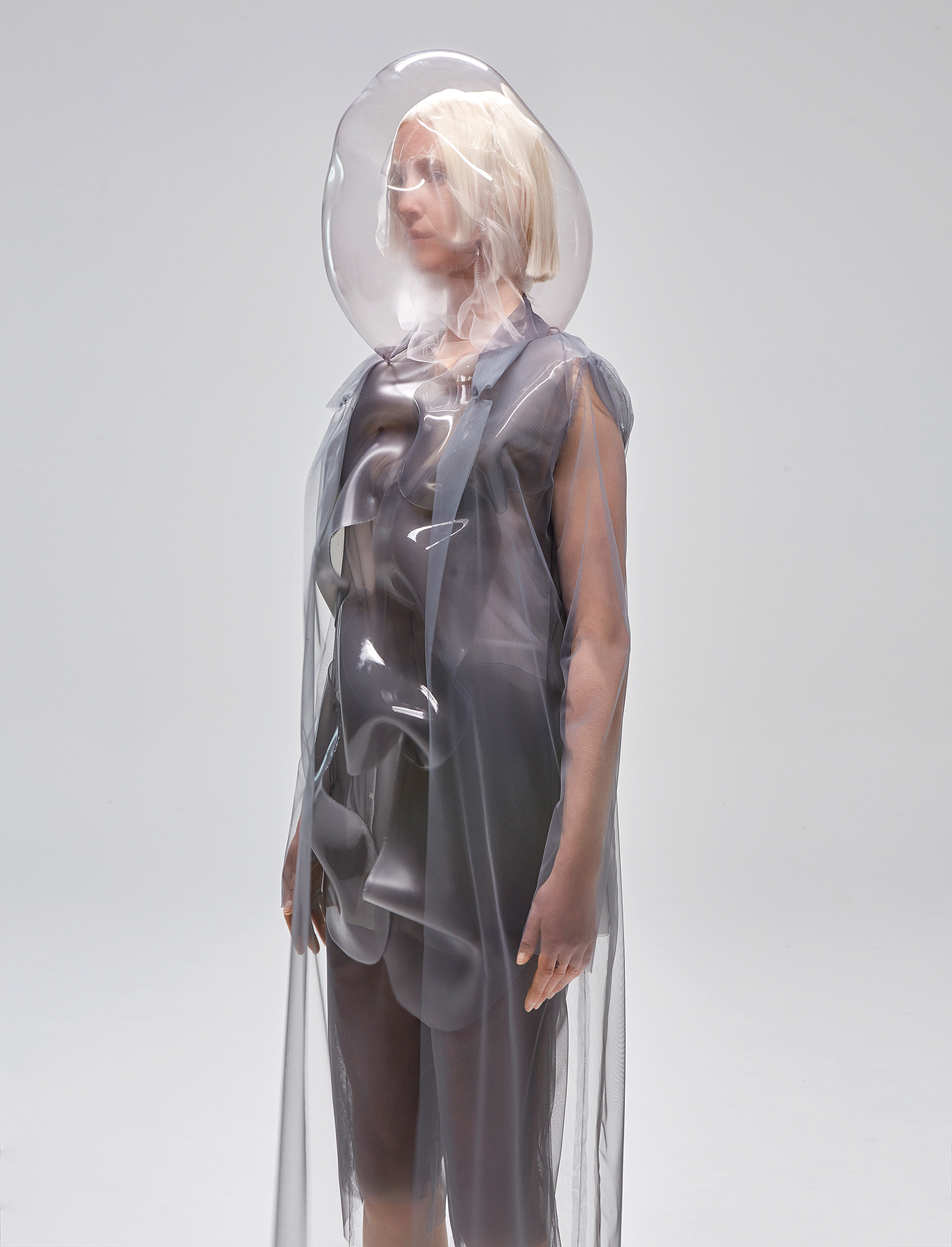
For now, the remaining loans are en route to Edinburgh. A question mark does still hover over one prima donna exhibit, whose arrival (in true A list style) has yet to be confirmed. “We are very much hoping that we’re going to have a piece that has appeared in a TV show, worn by a very famous character, but unfortunately I cannot at this present moment confirm,” says Ripley with careful diplomacy. I ask her if she spotted anything on the 2023 couture catwalks, say, that she might have liked to add to the show, timings and budget allowing. “Not specifically the catwalk, but something I think that’s really influencing fashion and fashion shoots and probably what we will see on the next set of catwalks is the Wednesday Adams remake on Netflix. It has just given this whole new kind of springboard to people thinking about black in terms of self-styling. It’s too late now, so I’m gutted!” Speaking of self-styling, one last question: Has Ripley herself found the answer to that elusive question beloved of all fashion editors – has she found her own perfect Little Black Dress? “I have one or two. It is famously the garment to wear if you don’t know what a dress code is, or you don’t want to be overdressed or underdressed, you think, ‘I will just wear a little black dress’.” She gives a wry half-smile: “But having worked on this exhibition, I don’t feel that way about it at all. I feel much more like I would rather wear it in a sense where it was going to be disruptive. “I’m not even sure I want to wear a black dress to the opening of the exhibition. I think I’m more likely to wear a pink trouser suit instead.
Beyond The Little Black Dress’ will show at the National Museum of Scotland in Edinburgh (July 1 to October 29). For a true fashion odyssey this summer, also visit ‘The Fashion Show: Everything but the Clothes’, at the Michelin Design Callery, V&A Dundee (June 3 to January 24), curated by fashion academic and writer Iain R Webb, who has also contributed a chapter on ‘Sublime Black’ to the ‘Little Black Dress: A Radical Fashion’ book. Fashion pilgrims take note, Edinburgh to Dundee is just an hour and a half journey by train.
Απόδοση: Νίνα Ζβε
